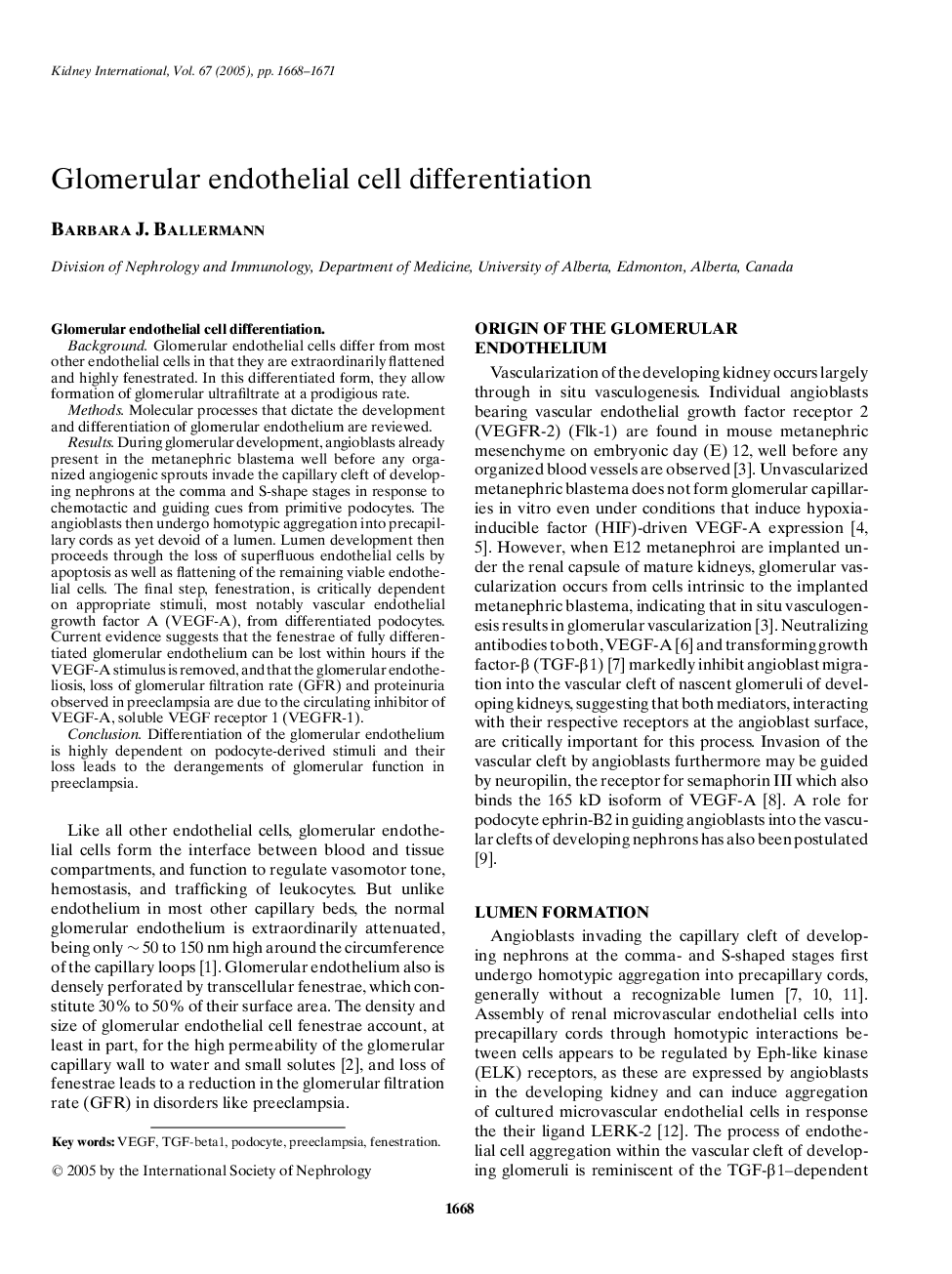| Article ID | Journal | Published Year | Pages | File Type |
|---|---|---|---|---|
| 3886562 | Kidney International | 2005 | 4 Pages |
Glomerular endothelial cell differentiation.BackgroundGlomerular endothelial cells differ from most other endothelial cells in that they are extraordinarily flattened and highly fenestrated. In this differentiated form, they allow formation of glomerular ultrafiltrate at a prodigious rate.MethodsMolecular processes that dictate the development and differentiation of glomerular endothelium are reviewed.ResultsDuring glomerular development, angioblasts already present in the metanephric blastema well before any organized angiogenic sprouts invade the capillary cleft of developing nephrons at the comma and S-shape stages in response to chemotactic and guiding cues from primitive podocytes. The angioblasts then undergo homotypic aggregation into precapillary cords as yet devoid of a lumen. Lumen development then proceeds through the loss of superfluous endothelial cells by apoptosis as well as flattening of the remaining viable endothelial cells. The final step, fenestration, is critically dependent on appropriate stimuli, most notably vascular endothelial growth factor A (VEGF-A), from differentiated podocytes. Current evidence suggests that the fenestrae of fully differentiated glomerular endothelium can be lost within hours if the VEGF-A stimulus is removed, and that the glomerular endotheliosis, loss of glomerular filtration rate (GFR) and proteinuria observed in preeclampsia are due to the circulating inhibitor of VEGF-A, soluble VEGF receptor 1 (VEGFR-1).ConclusionDifferentiation of the glomerular endothelium is highly dependent on podocyte-derived stimuli and their loss leads to the derangements of glomerular function in preeclampsia.
